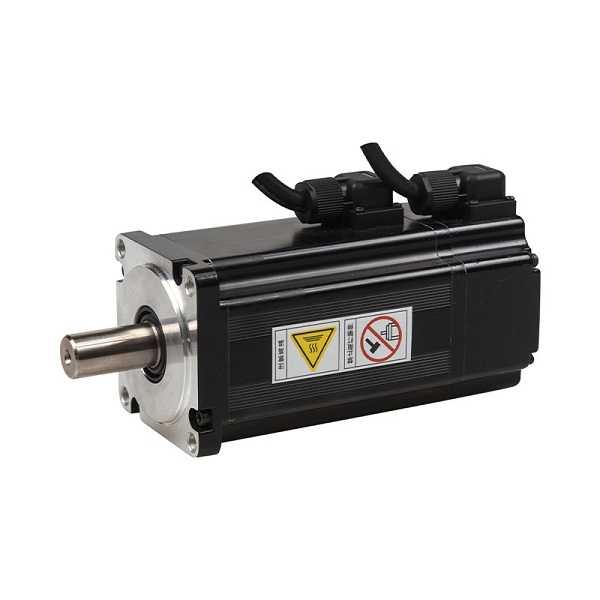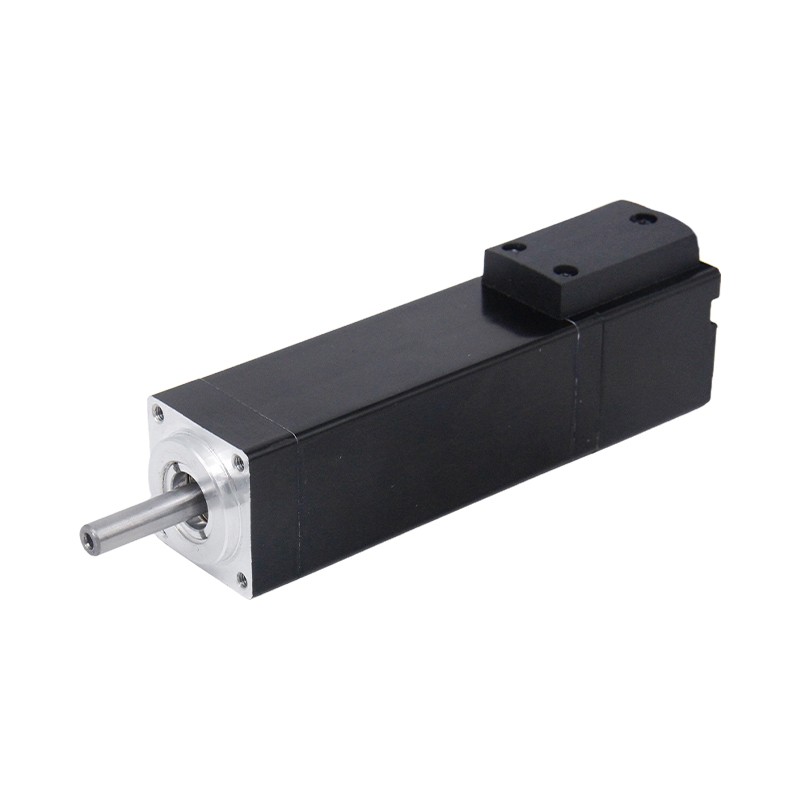How do you control a big servo motor?
 Nov 08, 2024|
Nov 08, 2024| View:217
View:217
With the rapid development of industrial automation, servo motors are also getting popular increasingly. In modern industry, with the rapid development of technology increasingly wider field in use is a large servo motor.So,How do you control a big servo motor?
1、 Introduction: What is a Big Servo Motor?
Large servo motors typically have significant differences in size, power, and application compared to small servo motors. The definition of 'large' mainly reflects its ability to output higher torque and power to meet the needs of large equipment and complex systems.
Compared with small servo motors, large servo motors are larger in size and can withstand larger loads. In terms of power, they can provide stronger power and are suitable for fields such as industrial automation, robotics, CNC machine tools, and large machinery.
For example, in the automotive manufacturing industry, large servo motors can be used to drive large stamping machines, ensuring precise stamping operations. In large-scale logistics systems, they can drive equipment such as conveyor belts and cranes.

2、 Basic Components of a Big Servo Motor System
Servo motor: Large servo motors can be of alternating current (AC) or direct current (DC) type, depending on application requirements. AC servo motors typically have higher power and speed ranges, while DC servo motors have advantages in some specific applications.
Motor driver (amplifier): converts control signals into power suitable for the motor. For large servo motors, the driver needs to have high current output capability to meet the power requirements of the motor.
Controller: A device or system that sends commands (such as speed, position) to a motor driver. The controller can be a dedicated servo controller or a more general motion controller.
Feedback device: Feedback devices such as encoders or rotary transformers provide real-time feedback to the controller to achieve precise control. High precision feedback devices are crucial in large servo motor systems.
3、 Control Methods for a Big Servo Motor
Closed loop control system: The controller continuously compares the actual position or speed of the motor with the expected value through a feedback loop, and adjusts the signal input to the motor driver as needed.
PID control is a common control algorithm that adjusts the behavior of a motor through the actions of proportional, integral, and derivative components to achieve smooth and accurate operation.
Open loop control is suitable for some simple applications, but the control accuracy is relatively low. In open-loop control, there is no feedback during motor operation, which may result in significant errors.
4、 Control Signals and How They Work
Pulse width modulation (PWM) is the most commonly used control method for large servo motors. By changing the width of the electrical pulse, the speed and position of the motor can be controlled.
Adjusting the frequency of the PWM signal can control the speed of the motor. Meanwhile, by utilizing feedback devices, PWM signals can also precisely control the position of the motor.
Some systems also use analog voltage or current signals to control motor behavior, but in modern systems, PWM is more common.
5、 Setting Up the Control System
Choosing the appropriate controller is crucial. Based on application requirements, decide whether to use a dedicated servo controller or a more universal motion controller.
Adjusting motor parameters such as acceleration, deceleration, torque limit, and speed can be configured through the adjustment interface or software.
Setting communication protocols, such as Modbus, EtherCAT, or CANopen, can be used for communication between motor controllers, programmable logic controllers (PLCs), and other components in large industrial systems.
6、 Feedback Mechanisms in Servo Control
Encoder is a commonly used feedback device for large servo motors, which updates the position information of the motor by sending pulses to the controller to ensure precise control.
Rotary transformers are used in applications that require higher durability or more harsh environments.
The closed-loop system utilizes the position and speed feedback of the motor to continuously adjust and correct its behavior, making it more accurate.
7、 Controlling Torque and Speed
In many applications, controlling the torque generated by the motor is crucial. The servo controller can adjust the current sent to the motor to regulate the torque output.
For applications that require maintaining a constant speed, the system uses feedback to adjust the control signal to ensure that the motor maintains the required speed.
8、 Power Supply and Thermal Management
Large servo motors require a large amount of electricity and typically require dedicated high current power supplies.
Due to the high power, thermal management is crucial. Air or liquid cooling systems and thermal sensors can be used to prevent motors and drivers from overheating.
9、 Communication Protocols for Industrial Applications
EtherCAT is a fast real-time Ethernet protocol commonly used for motion control in industrial environments.
CANopen is a powerful protocol suitable for embedded control systems, particularly in automotive and industrial automation applications.
Modbus is widely used in industrial environments for communication between control devices, sensors, and actuators.
Fieldbus is a network protocol used to control and monitor servo motors in large and complex environments in automation systems.
10、 Tuning and Calibration for Optimal Performance
Motor tuning is crucial for ensuring smooth operation. Adjusting parameters such as PID values can optimize the response of servo motors to inputs.
Calibrate based on specific loads, environmental conditions (such as temperature, humidity), and machine dynamics to achieve optimal performance.
11、 Safety Considerations in Controlling Big Servo Motors
The overload protection mechanism can prevent the motor from being damaged under high torque or sudden load changes.
Emergency stop (E-Stop) is a critical safety function that cuts off motor power in case of emergency.
Current monitoring and limiter can prevent motor overheating or damage, ensuring appropriate current flow to the motor at all times.
12、 Troubleshooting and Maintenance
Diagnose common problems such as motor stalling, unstable motion, or overheating, and understand their root causes.
Regular maintenance includes checking bearing wear, cleaning cooling system filters, and testing electrical components to ensure long-term reliability.
Use the built-in diagnostic tools provided by the controller manufacturer to identify faults and adjust settings accordingly.
Accurate control of large servo motors is crucial for many industrial applications. From selecting the appropriate controller to adjusting system parameters and tuning calibration, every step needs to be carefully considered. Meanwhile, paying attention to safety issues and regular maintenance can ensure the long-term reliable operation of large servo motors. If you need high-quality single phase servo motors, Baolong is your best choice. In addition, square servo motors may also provide unique solutions in some special applications.

































